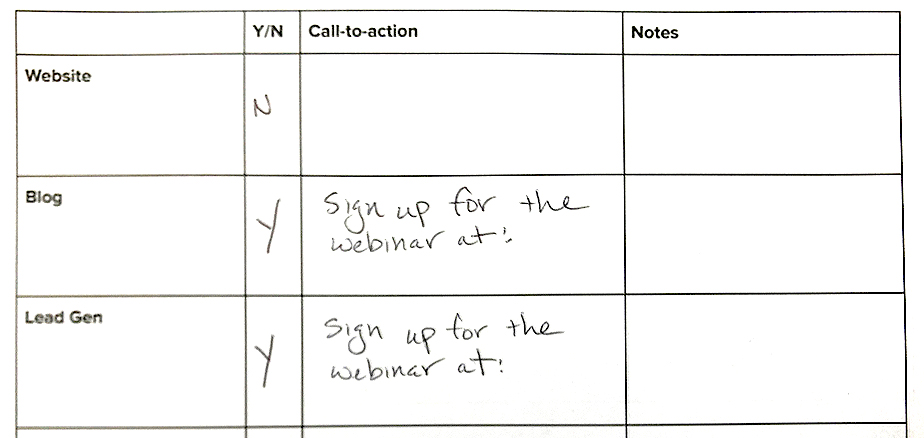Video is one of the top avenues for marketing, but it’s no longer as impactful to just set up a camera and become a talking head without clear direction or a purpose. Instead, the most effective videos tell a story. They evoke emotion, get to the heart of your audiences’ pain points or desires, and present an actionable solution.
I absolutely love the filmmaking agency Stillmotion because they tell profound stories in their videos. They do this by adhering to the Muse Video Storytelling Process: People, place, plot, and purpose. I think this framework is absolutely wonderful for organizing your ideas to tell a story in any medium. However, it doesn’t quite align if you are working outside a traditional storytelling format. Many of us are shooting product demos, internal communications, or quick social media pieces. To work this process into a B2B strategy, I expanded the Muse Storytelling Process so we can regularly use it here at Brightcove.
The 4 P’S + A + D
Every story has a beginning, middle, and end, but the most profound ones evoke emotion. The Muse Storytelling Process is my recommended way to inject emotion and engagement into your videos. This works perfectly in a B2C context, but I like to take it a step further and add additional parameters to my video storytelling process when working in a B2B context. When following the 4 P’s, we also need to identify who the “A” audience is, and the “D” distribution platform, or where the video content will live once it is produced. When planning your videos, ask these questions:
- Plot: What is the story you are trying to tell?
- Purpose: Why are you telling this story? What do you want people to do as a result of watching this?
- People: Who are the people in this video story? How do they relate to the story you want to tell?
- Place: Where is this being shot? Not only from a logistical standpoint, but how does place influence story? For example, interviewing a CEO in his office has a much different vibe than interviewing the CEO on the manufacturing floor.
- Audience: Who is the intended audience for this story? Existing customers? New customers? Staff?
- Distribution: Where will this content live and be shared? Social? Blog? Landing Page? Front Page?
Having a great process in place allows me to focus on making sure I get what I need while I am on set.
How I Use This Video Storytelling Process
I am part of an internal creative agency, so one aspect of my job is to help guide content requests that need video. I usually have at least one brainstorm session where I gather all requirements and then apply them to the framework above. This helps me filter all the ideas that emerge from the meeting so I can scale the information and stay on target, on message, and on time.
Recommended for You
Don’t get overwhelmed with the different ideas you or your producer might have. After an initial conversation about what I pitch, the stakeholders and my team continue to iterate on the idea. Sometimes this is incredibly fast, sometimes it takes a few meetings for everyone to land on a concept.
And although you want to tell a great story, don’t get caught up on the “storytelling”. By following this process, it will fluidly form, but if it doesn’t don’t stress, just showing how something works is a great story in itself.
Remember, most of the work is going to happen in the early stages of production, so you don’t have to spend a ton of money and time on shooting or fixing things you missed while coming up with your idea. For the purpose of this example, let’s keep our idea simple, so we can align it clearly to our process.
Let’s look at a basic example of the process in execution:
- Plot: Highlight the new feature of product X.
- Purpose: To educate our customers on how the feature works. (Purpose MUST be measurable. Inspiring people, making them laugh, etc. is not something we can measure, so I throw these terms out. More on that in a bit.)
- People: Whoever can deliver the story in the most engaging way. Most of the time it is someone tied to the product, but think unusual suspects too!
- Place: Our in-house video studio – living room setup (this is a go-to generic set for us).
- Audience: Existing customers who have an Apple TV. (Keep this simple to start, don’t overcomplicate the range of audiences – it will complicate how you tell your story. Make a second video that nuances some language towards new business and send that out through the proper channels.)
- Distribution: Blog and social. (If I wanted this on Instagram or Twitter, this would drastically affect the concept, per restrictions of data, usability, and viewer attention.)
Once this is mapped out, I come up with various concepts that tie into each of these elements. As I filter through each idea, I can remove ones that don’t work because they don’t align with the purpose, the audience, the place, or the distribution channel. Here’s the truth – I don’t prescribe that the concept I pitch is the best and only way to tell a story in video. I pitch it because I came to an idea that hits the points above, is doable in the timeframe, and is fiscally appropriate for the stakeholder. We produce, measure, and make adjustments from there.
Apply a Process to Your Work
Whether you have internal or choose external production help, you can save time and effort having a process that helps you outline the important elements of creating a video story that drives action. Best of all, it’s another step forward in getting going with video.


